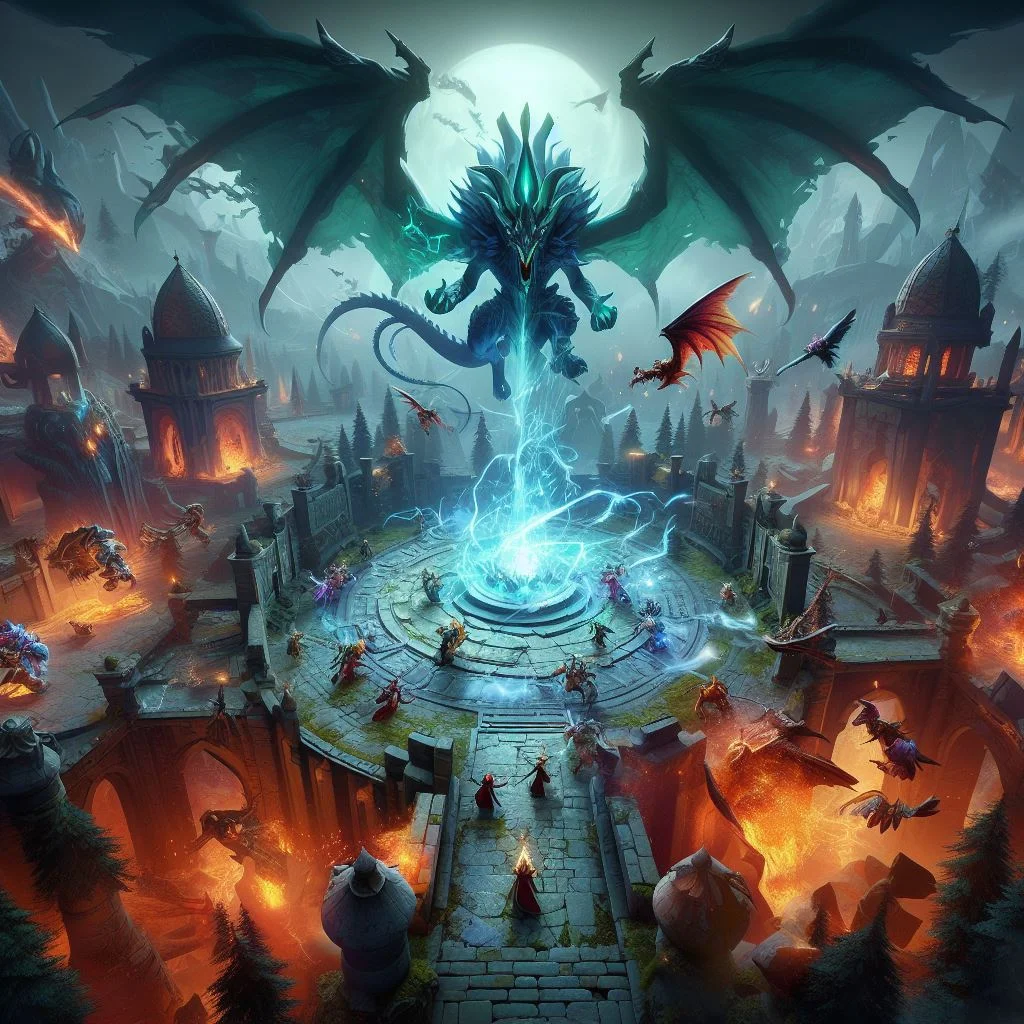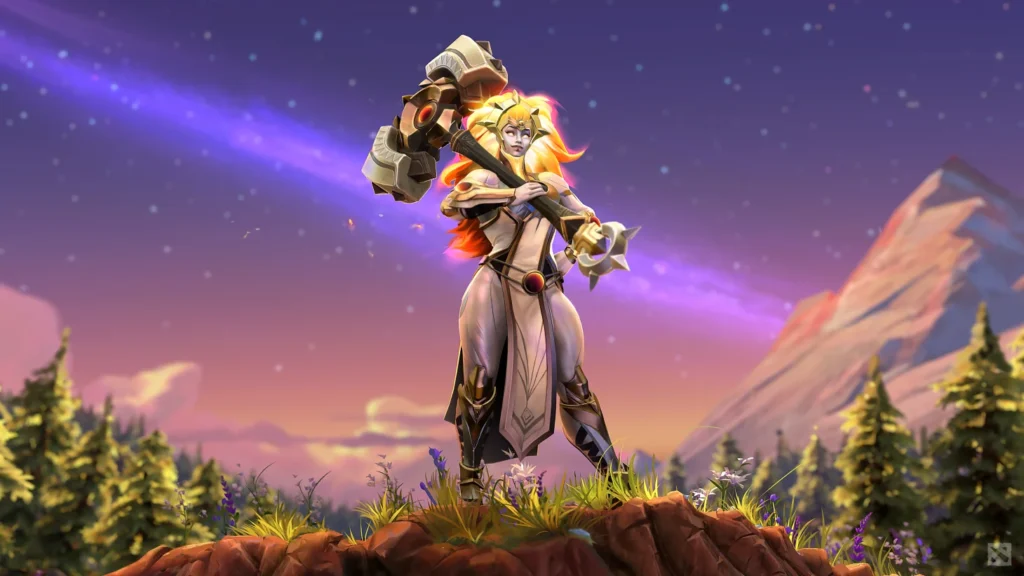Dota 2 is a highly popular and incredibly complex multiplayer online battle arena (MOBA) game that has captured the hearts of millions of players worldwide. With its rich lore, diverse hero roster, and intricate gameplay mechanics, learning how to play Dota 2 can seem like a daunting task for beginners. However, with the right guidance and a bit of patience, anyone can embark on this exciting gaming journey and become a formidable Dota 2 player.
In this comprehensive guide, we’ll dive deep into the fundamentals of Dota 2, covering everything from the basics of the game to advanced strategies and tactics. Whether you’re an absolute beginner or someone looking to improve your skills, this guide will equip you with the knowledge and insights you need to conquer the treacherous battlefields of the Dota 2 universe.
Understanding the Basics
Before we delve into the intricacies of Dota 2, let’s start with the basics. The primary objective of the game is to destroy the enemy team’s Ancient, a massive structure located at the heart of their base. To achieve this goal, two teams of five players, known as the Radiant and the Dire, battle it out on a sprawling map, utilizing three distinct unit types:
- Heroes: Powerful characters with unique abilities and playstyle, controlled by the players.
- Creeps: Disposable units that continuously spawn and march down the lanes toward the enemy base.
- Buildings: Defensive structures that protect your base and provide crucial advantages when destroyed.
Throughout the game, players must farm by killing creeps and enemy heroes to gain experience and gold, which are essential resources for leveling up abilities and purchasing powerful items.
Choosing Your Hero
Dota 2 boasts an impressive roster of over 100 unique heroes, each with their own set of abilities, strengths, and weaknesses. Choosing the right hero is crucial for success, as it not only determines your playstyle but also influences your team’s overall strategy.
Hero Roles:
- Carry: These heroes excel at dealing massive damage and are the primary damage dealers in the late game.
- Support: Focused on providing assistance to their teammates through healing, buffs, and crowd control abilities.
- Initiator: Heroes designed to start team-fights by disrupting the enemy team’s formation.
- Disabler: Specializes in locking down enemy heroes with disabling abilities, allowing their team to follow up with damage.
- Nuker: Heroes capable of dealing high burst damage, often through powerful area-of-effect spells.
For beginners, it’s recommended to start with simpler heroes like Sniper, Lich, or Wraith King. These heroes have straightforward abilities and mechanics, allowing you to focus on mastering the game’s core concepts before venturing into more complex heroes.
The Dota 2 User Interface (UI)
Dota 2’s user interface (UI) can be overwhelming at first glance, but understanding its various elements is crucial for effective gameplay. Here’s a breakdown of the essential UI components:
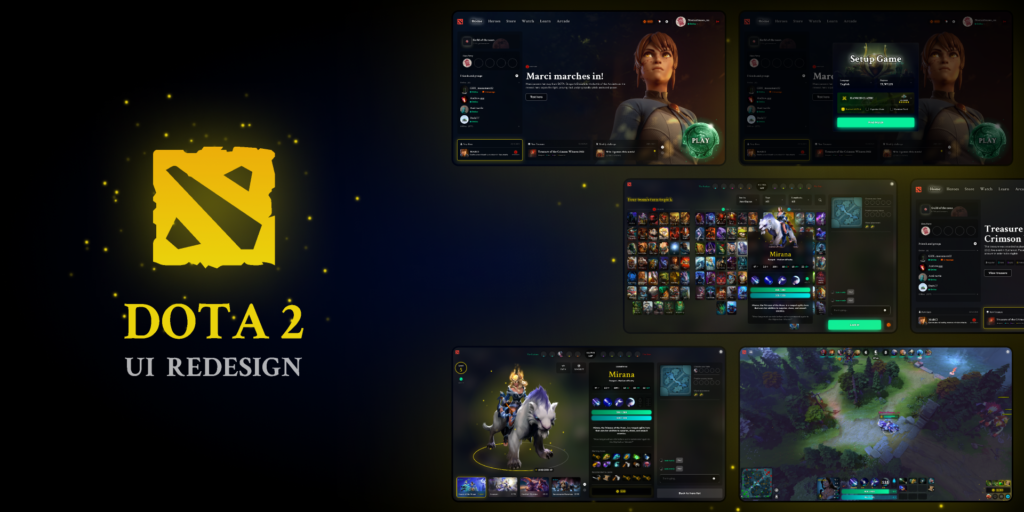
- Minimap: This small map in the bottom-left corner provides an overview of the entire battlefield, allowing you to track the movement of allies, enemies, and objectives.
- Shop: Access a wide array of items that can enhance your hero’s abilities and stats by visiting the shop, either through the UI or by using hotkeys.
- Abilities: Your hero’s unique abilities are displayed on the bottom-right, and you can level them up or activate them using hotkeys or by clicking on them.
- Hotkeys: Customizable keyboard shortcuts that allow you to quickly access abilities, items, and other game functions.
Mastering hotkeys and customizing your UI settings can significantly improve your gameplay experience and efficiency. Don’t be afraid to experiment and find a setup that works best for you.
Laning Phase
The laning phase is the early stage of the game where teams establish their presence on the map and begin the process of farming and gaining advantages. Dota 2 features three primary lanes:
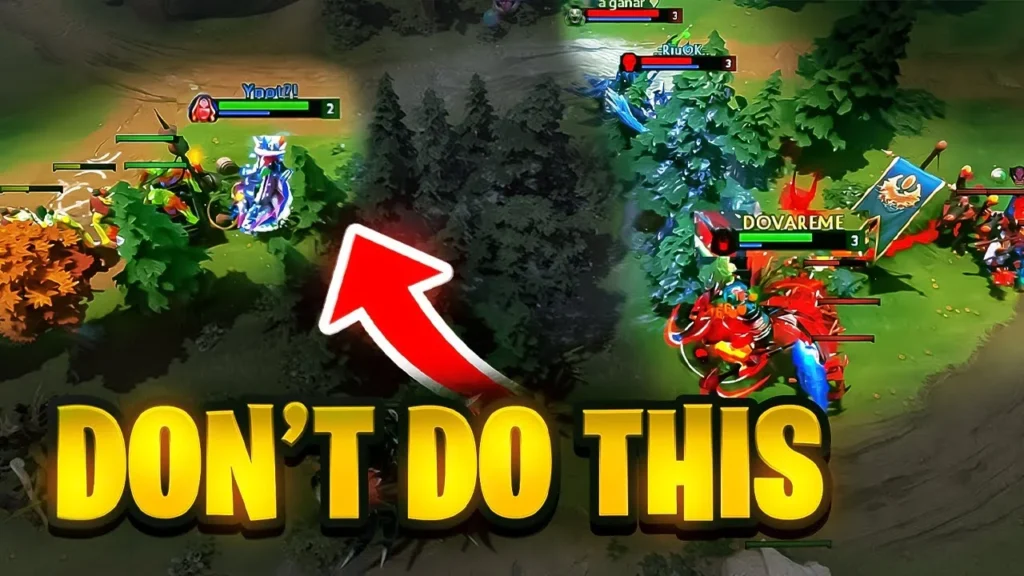
- Safe Lane: Also known as the “Easy Lane,” this is where the carry heroes typically farm and gain levels.
- Mid Lane: A solo lane where two mid laners from opposing teams face off against each other, often engaging in high-pressure battles.
- Off Lane: The “Hard Lane,” where teams typically position their initiators or semi-carries to disrupt the enemy’s farming efforts.
During the laning phase, players must focus on last hitting (dealing the final blow to enemy creeps) to maximize their gold income and denying (killing their own creeps before the enemy can last hit them) to deny the opposing team resources. Maintaining lane equilibrium, harassing opponents, and pulling/stacking neutral creep camps are also essential skills to master.
Team-fight Mechanics
As the game progresses, teams will engage in intense team-fights, where positioning, map awareness, and coordination are crucial for success. Here are some key team-fight mechanics to keep in mind:
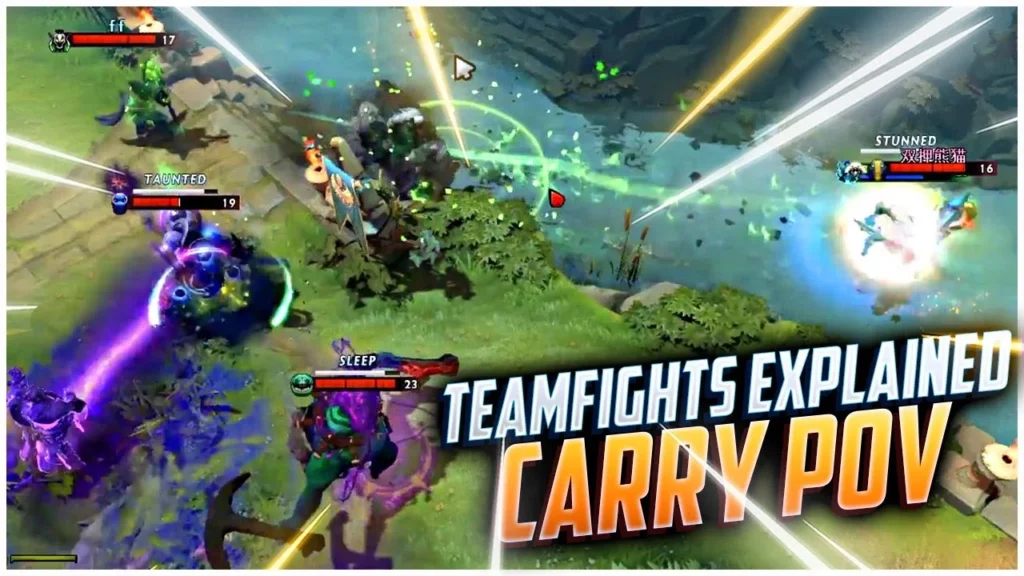
- Positioning: Positioning yourself correctly based on your hero’s role and abilities can mean the difference between victory and defeat.
- Power Spikes: Understanding your hero’s power spikes (points in the game where they become significantly stronger) can help you identify the best times to initiate team-fights or play more aggressively.
- Initiating: Initiators play a vital role in starting team-fights by disrupting the enemy team’s formation, allowing their teammates to follow up with damage and crowd control.
- Disabling: Disablers excel at locking down enemy heroes, preventing them from retaliating or escaping.
- Burst Damage: Nukers and burst damage dealers can quickly eliminate high-priority targets with their powerful spells and abilities.
Mastering these mechanics and understanding your hero’s strengths and weaknesses in teamfights will significantly improve your chances of success.
Itemization and Economy
In Dota 2, proper itemization and resource management are critical for gaining an advantage over your opponents. Here’s what you need to know:
- Item Progression: Different heroes have different optimal item progressions based on their roles and playstyle. Understanding these progressions and prioritizing the right items can greatly enhance your hero’s effectiveness.
- Farming Patterns: Efficient farming patterns involve identifying the safest and most lucrative areas on the map to accumulate resources without putting yourself at risk.
- Resource Management: Balancing your gold and experience gain through efficient farming, last hitting, and denying is essential for maintaining an economic advantage over your opponents.
Some core items for different hero roles include:
- Carries: Battle Fury, Desolator, Manta Style, Butterfly
- Supports: Force Staff, Glimmer Cape, Aether Lens, Ghost Scepter
- Initiators: Blink Dagger, Blade Mail, Crimson Guard
- Disablers: Rod of Atos, Scythe of Vyse, Abyssal Blade
- Nukers: Dagon, Ethereal Blade, Aghanim’s Scepter
Remember, itemization is highly situational and depends on the game’s flow, so adaptability and game sense are key.
Advanced Strategies and Tactics
As you progress in Dota 2, you’ll encounter various advanced mechanics and strategies that can give you a significant edge over your opponents. Here are some crucial ones to be aware of:
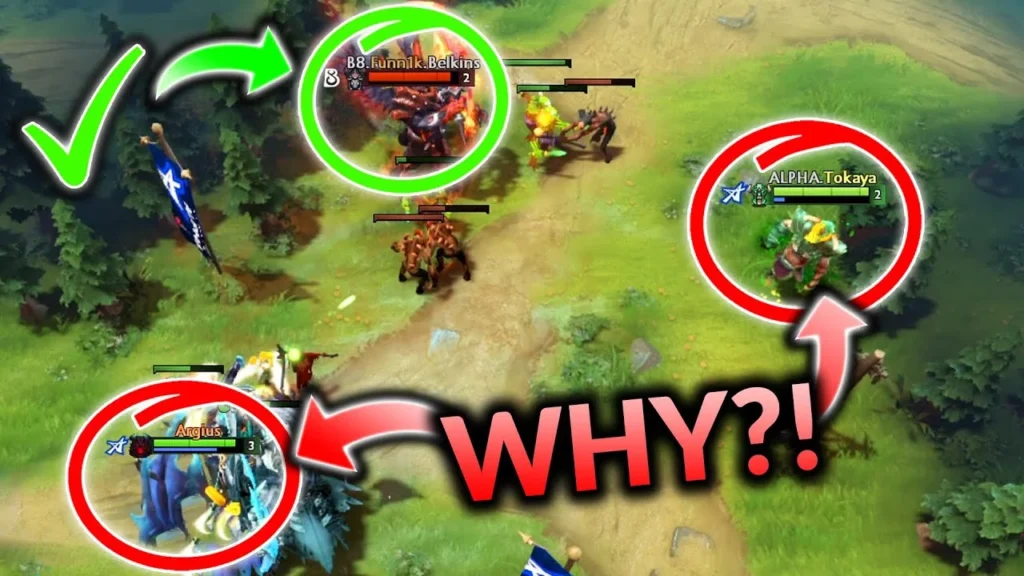
- Roshan: A powerful neutral creature that drops valuable items and temporary buffs when defeated. Controlling Roshan’s pit and timing Roshan attempts is a critical part of the game.
- Smoke of Deceit: This consumable item grants temporary invisibility to your team, allowing for stealthy ranks and map rotations.
- Buyback: A mechanic that allows you to instantly respawn after death by spending a large sum of gold, often used in crucial late-game situations.
- Drafting and Counter-picking: Choosing heroes that synergize well with your team’s strategy and counter the enemy’s draft can significantly influence the game’s outcome.
- Vision Control: Effectively placing and removing observer wards (granting vision) and sentry wards (revealing invisible units) can provide a crucial information advantage.
Mastering these advanced tactics and strategies will separate the skilled players from the rest, but remember, they should be approached with caution and proper game knowledge.
Communication and Teamwork
- Pings and Chat Wheel: Use the in-game ping system and chat wheel to quickly communicate with your team, call for help, or warn about missing enemies. Mastering these tools is crucial for coordinating with teammates who may not speak the same language.
- Voice Communication: While not mandatory, using voice chat software like Discord or the in-game voice chat can greatly improve team coordination, especially during team fights and decisive moments.
- Positive Attitude: Maintaining a positive attitude and avoiding toxic behavior can go a long way in fostering a cooperative environment and preventing tilting or demoralizing your teammates.
- Shot Calling: In higher-level games, having a designated shot caller who can make decisive calls and coordinate the team’s movements can be extremely beneficial.
- Replay Analysis: Reviewing your own replays or those of professional players can help you identify areas for improvement, both in terms of individual gameplay and team coordination.
Remember, Dota 2 is a game that rewards patience, perseverance, and a willingness to learn from mistakes. Even the best players in the world continue to refine their teamwork and communication skills.
People Also Ask
Is Dota 2 hard to learn for beginners?
Dota 2 has a notoriously steep learning curve due to its complexity and depth. However, with dedication and the right guidance, beginners can gradually master the game’s mechanics and strategies. It’s important to have patience and not get discouraged by early setbacks.
How long does it take to get good at Dota 2?
There is no definitive answer, as it depends on individual factors such as prior gaming experience, dedication, and natural aptitude. Generally, it can take several months to a year of consistent practice to reach a competent level of play, and even longer to become truly skilled.
What are the system requirements for Dota 2?
Dota 2 is optimized to run on a wide range of hardware configurations. The minimum requirements include a dual-core processor, 4GB of RAM, and a dedicated graphics card with at least 1GB of VRAM. However, for an optimal experience, it’s recommended to have a more powerful system.
Can I play Dota 2 solo or with friends?
Dota 2 offers both solo and party queue options. Solo queue matches you with and against players of similar skill levels, while party queue allows you to team up with friends and play together. Additionally, you can create or join custom lobbies for more casual or practice games.
Are there any good Dota 2 learning resources?
Yes, there are numerous resources available for learning and improving at Dota 2:
- Official Dota 2 blog and community forums
- Professional player streams and YouTube guides
- Third-party websites like DotaBuff, OpenDota, and Dota2ProTracker
- Educational content creators like BSJ, PurgeGamers, and GameLeap
Utilizing these resources alongside practical experience can significantly accelerate your learning process.
Conclusion
Mastering Dota 2 is a journey filled with challenges, triumphs, and countless hours of dedication. While the game’s complexity can be daunting, this guide has provided you with a solid foundation to build upon.
Remember, the key to success in Dota 2 lies in patience, perseverance, and a willingness to continuously learn and adapt. Don’t get discouraged by losses or setbacks; instead, use them as opportunities to identify areas for improvement and grow as a player.
Surround yourself with a positive community, embrace teamwork and communication, and never stop exploring the game’s boundless depths. With time and effort, you’ll find yourself ascending the ranks and joining the elite ranks of Dota 2 players.
So, what are you waiting for? Gather your friends, dive into the game, and embark on an adventure like no other. The Dota 2 universe awaits!
